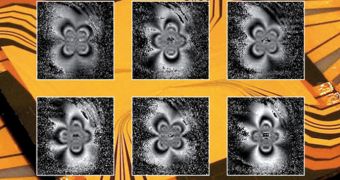German scientists at the Max Planck Institute of Quantum Optics, in Garching, the Ludwig-Maximilians-Universitat Munich (LMU), and the University of Basel announce an important innovation in the field of physics. The team managed to develop a new imaging method that uses ultracold atoms to make microwave fields visible. The technique could have a vast array of applications in a host of technological processes, the researchers believe, and especially in the field of communication technologies.
Microwave technology is to well developed at this point, that it's highly unlikely you don't have a device using it around you right now. Mobile phones and laptops are among the most common electronics that feature microwave circuits, which they use for wireless communications. Measuring and characterizing microwave fields is of paramount importance for producing more advanced wireless circuits, and this is where the new imaging method is bound to make a difference, AlphaGalileo reports.
Professor Theodor W. Hansch, who holds a double appointment at the MPI and the LMU, and professor Philipp Treutlein, from the University of Basel, are the leaders of the research team that created the new imaging method. The technique allows for microwave fields to be imaged directly, completely, and at high spatial resolutions. As sensors, the method uses clouds of ultracold atoms, experts write in the August 2 issue of the esteemed scientific journal Applied Physics Letters.
“The internal state of the atoms changes if a microwave field is applied. We can image this change of internal state with a CCD camera with high spatial resolution. The stronger the microwave field at a given position, the faster the rate of change we observe,” explains expert Pascal Bohi. He co-developed the method as part of his doctoral thesis. “We have successfully demonstrated the new technique in our lab. Quite naturally, further development is necessary before it could be used in commercial applications,” project leader Philipp Treutlein concludes.

 14 DAY TRIAL //
14 DAY TRIAL //